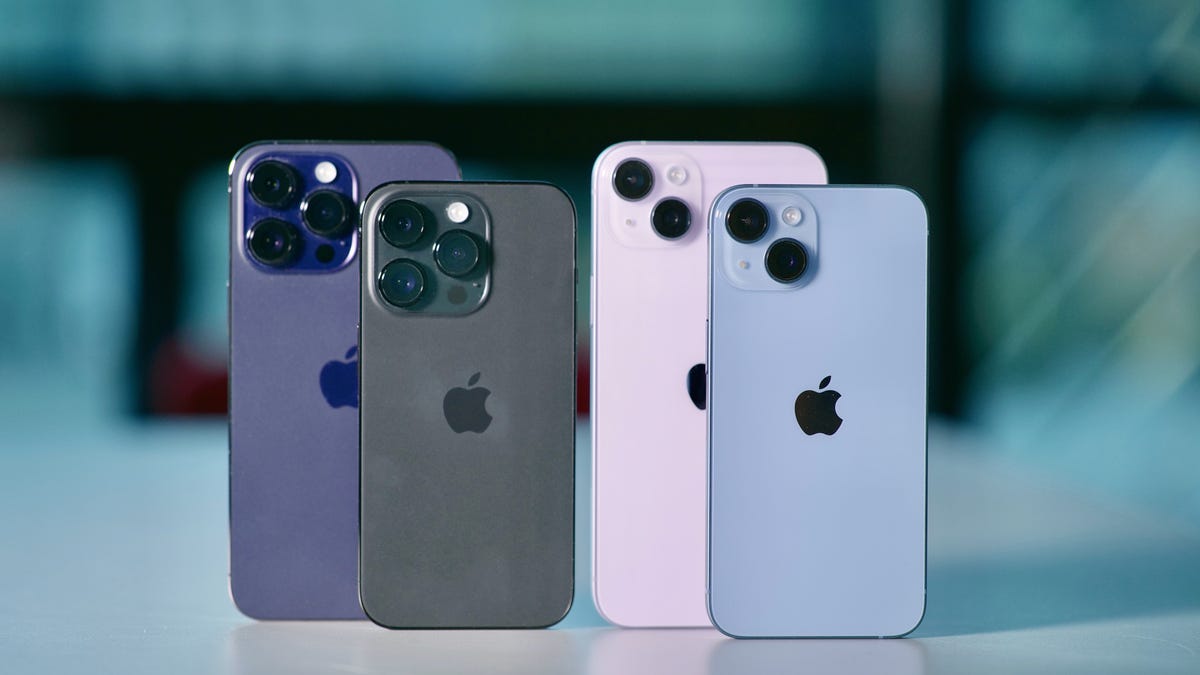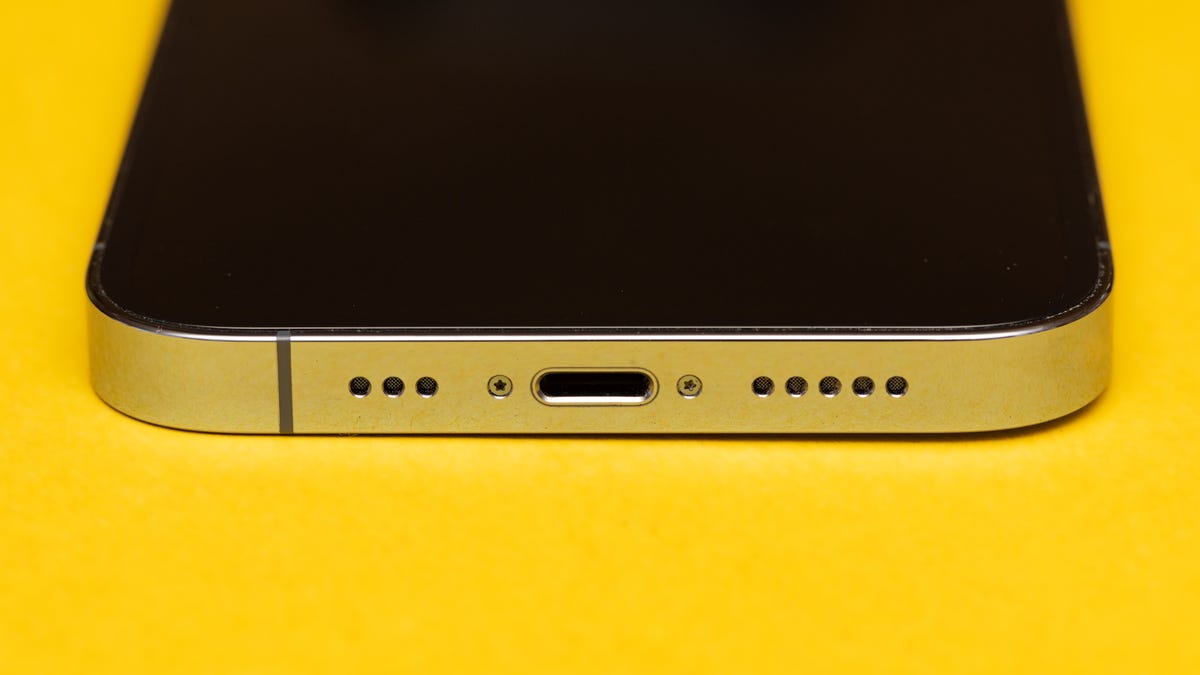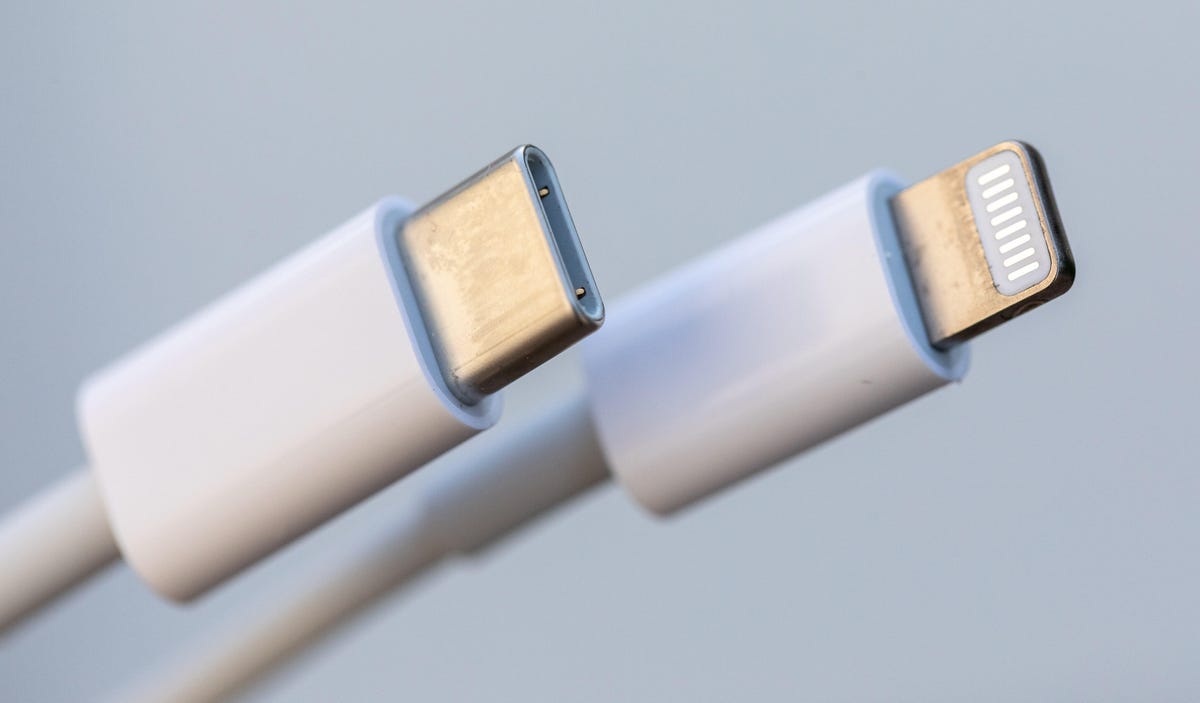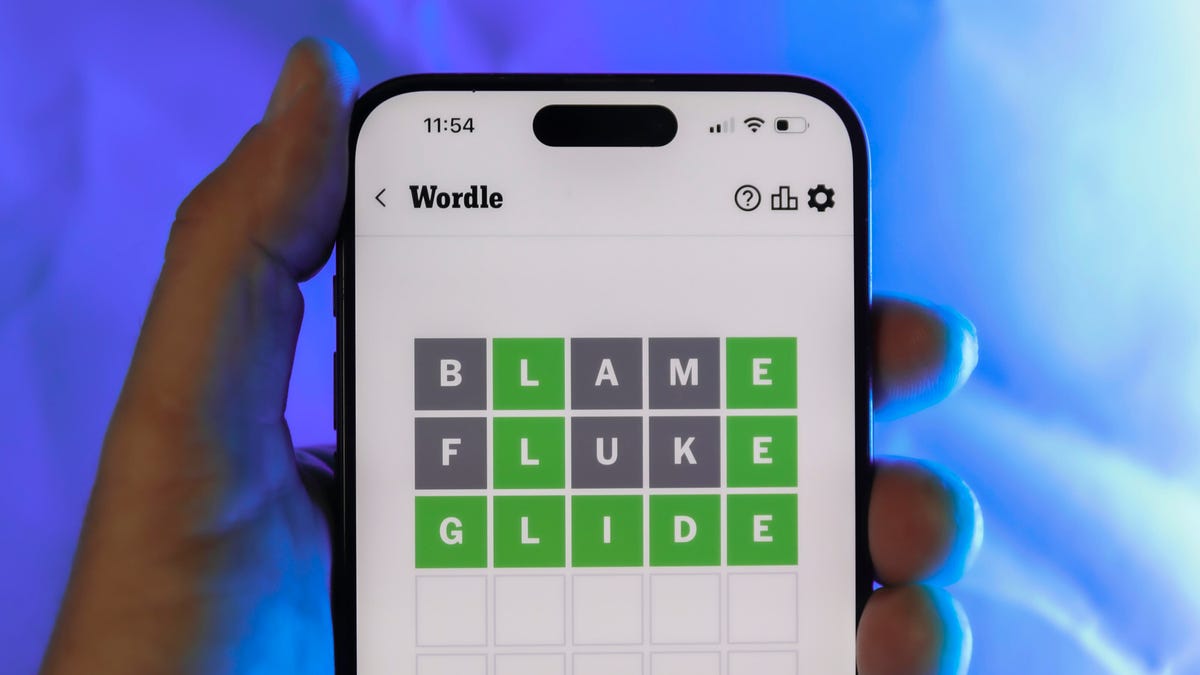Technologies
Everything We Know About the iPhone 15 and USB-C
There are still plenty of questions about how Apple will handle the iPhone’s switch to USB-C.

For the first time in more than a decade, you might need a different charger for your iPhone. Apple executives said the company plans to comply with European rules mandating that new phones all use the same common USB-C charging port. Most phones already use USB-C, with Apple being the main outlier.
When asked if Apple will move to USB-C, Greg Joswiak, Apple’s senior vice president of worldwide marketing, said the company has «no choice.» Apple will «comply with local laws» as it does around the world, Joswiak said during an appearance at The Wall Street Journal Tech Live conference in October.
That said, there’s still a lot we don’t know about how Apple will execute the transition to USB-C for the iPhone. Apple rarely discusses new products before announcing them, meaning we don’t have much insight on details like whether all new iPhones will get USB-C, or just those sold in Europe.
Apple declined to share further details regarding future plans to bring USB-C to the iPhone.
Will the iPhone 15 have a USB-C charging port?


Today’s iPhones use the Lightning port to charge.
Stephen Shankand/CNETThere’s a chance the iPhone 15 could have a USB-C port instead of the Lightning connector, but it’s impossible to know until Apple releases its next iPhone. The EU’s rules say all mobile phones sold in the EU will need to have a USB-C charging port by the end of 2024. That means it’s unclear whether Apple will start the transition in 2023 with what will presumably be the iPhone 15, or wait until 2024.
But Chiew Le Xuan, a research analyst for Canalys, thinks the switch could come sooner rather than later.
«What we think is that Apple will bring Type C to the iPhone 15 series,» he said. «So, similar to what they did for the iPads [and] the Macs: They sort of just transitioned the whole product line.»
Apple has reportedly tested iPhone models with USB-C in the past. Bloomberg reported last May that Apple was testing future iPhone models with USB-C, as well as an adapter that would enable these iPhones to work with Lightning connections. Ming-Chi Kuo, an analyst for TF International Securities known for his Apple predictions, also said Apple plans to convert the iPhone to USB-C in 2023.
It’s also worth noting that Apple is a member of the USB Implementers Forum, a nonprofit organization that was formed to further advance USB development and adoption.
What’s the reasoning behind the EU’s new rules?
The new mandate is part of an effort to simplify the charging experience for consumers and cut down on electronic waste.
«Under the new rules, consumers will no longer need a different charger every time they purchase a new device, as they will be able to use one single charger for a whole range of small and medium-sized portable electronic devices,» reads a European Parliament press release.
The shift is also meant to help cut down on the roughly11,000 metric tons (12,125 tons) of annual e-waste resulting from unused chargers in the EU, the release says.
Will all future iPhones adopt USB-C, or just those in Europe?
This is another question we won’t know the answer to until Apple releases future iPhone models. But Maurice Klahne, senior research analyst at Counterpoint Research, thinks it seems likely Apple will transition the iPhone to USB-C more broadly rather than keeping it region-specific.
«It’s just simply too costly to make different devices for different regions,» he said. «And so Apple will likely make the switch everywhere all at once.»
What benefits does USB-C offer over Lightning?


The transition to USB-C could result in more perks and conveniences for iPhone owners. For example, you’d be able to use the same charger that powers other devices, like your MacBook laptop or iPad, to charge your iPhone. There’s also a broad accessory ecosystem for USB-C, considering it’s been standard on most electronics for the better part of the last decade. Plenty of Apple’s own products already rely on USB-C rather than Lightning, such as the iPad Air, iPad Pro and Apple’s lineup of MacBooks.
It’s possible the switch to USB-C could result in faster charging and data transfers, specifically on the iPhone 15 Pro and Pro Max. Kuo has reported that only the iPhone 15 Pro and Pro Max will support high-speed data transfers over USB-C, for example.
Le Xuan agrees, saying Apple will likely do more to separate the regular iPhone 15 from its premium sibling this year.
«By then moving into a Type C switch, we will probably see some sort of differentiation between the Pro and Pro Max and the non-Pro Max in terms of charging speeds,» he said.
Will I need an Apple-specific USB-C cable?
You shouldn’t need an Apple-made cable to charge your iPhone when Apple makes the switch to USB-C. After all, that would defeat the purpose of the EU’s push toward a universal charging cable.
But the company could potentially make it so that Apple-certified USB-C cables offer benefits over noncertified alternatives. Kuo, for example, reports that Apple will likely optimize chargers that are part of the company’s MFi certification program to offer faster charging speeds. This follows a leak from ShrimpApplePro (who also leaked the Dynamic Island’s design early), which says cables without an MFi certification will be limited in charging and data transfer speeds.
Apple hasn’t spoken about its plans for the iPhone 15 or future USB-C charging cables beyond the comments made at The Wall Street Journal’s conference. But a move like this could help Apple boost its accessory ecosystem by maintaining some level of exclusivity as it embraces the switch to a universal iPhone charger.
«Even though their walled garden isn’t as walled anymore,» said Klahne, «they can still make these little adjustments to keep their iOS base more walled off from the general Android market.»
Apple is expected to announce the iPhone 15 lineup in the September timeframe during its usual annual product launch event. Other than USB-C charging, rumors suggest new solid-state buttons are coming to the Pro models, while the Dynamic Island is expected to expand to non-Pro versions.
Technologies
Today’s Wordle Hints, Answer and Help for Dec. 1, #1626
Here are hints and the answer for today’s Wordle for Dec. 1, No. 1,626.

Looking for the most recent Wordle answer? Click here for today’s Wordle hints, as well as our daily answers and hints for The New York Times Mini Crossword, Connections, Connections: Sports Edition and Strands puzzles.
Today’s Wordle puzzle is a little tricky. Many people will confuse it with a similar word that’s spelled differently. If you need a new starter word, check out our list of which letters show up the most in English words. If you need hints and the answer, read on.
Today’s Wordle hints
Before we show you today’s Wordle answer, we’ll give you some hints. If you don’t want a spoiler, look away now.
Wordle hint No. 1: Repeats
Today’s Wordle answer has no repeated letters.
Wordle hint No. 2: Vowels
Today’s Wordle answer has two vowels.
Wordle hint No. 3: First letter
Today’s Wordle answer begins with L.
Wordle hint No. 4: Last letter
Today’s Wordle answer ends with H.
Wordle hint No. 5: Meaning
Today’s Wordle answer can refer to causing a liquid to drain away from something such as soil or ash.
TODAY’S WORDLE ANSWER
Today’s Wordle answer is LEACH.
Yesterday’s Wordle answer
Yesterday’s Wordle answer, Nov. 30, No. 1625 was MUGGY.
Recent Wordle answers
Nov. 26, No. 1621: HOVEL
Nov. 27, No. 1622: REMIT
Nov. 28, No. 1623: COLIC
Nov. 29, No, 1624: GRUFF
Don’t miss any of our unbiased tech content and lab-based reviews. Add CNET as a preferred Google source.
Technologies
Act Now to Get This Rare Cyber Monday Nintendo Switch 2 Deal Before It’s Gone
Pick up the Switch 2, Mario Kart World and a Samsung 256GB microSD Express card for $538.

Cyber Monday brings us many exciting offers, from shiny new laptops to record-low prices on televisions and headphones. But few offers are as enticing as a rare bundle deal on the Nintendo Switch 2, like the one we just spotted at Amazon. You get the Nintendo Switch 2, Mario Kart World game download and a Samsung 256GB microSD Express Card for one price of $538. That’s $22 off what might be the greatest gift you’ll ever give.
Considering the tumultuous past of this coveted gaming device, which involved delays and price increases due to tariffs, we didn’t think the Nintendo Switch 2 would go on sale at all this holiday season.
Our reviewer Scott Stein got his hands on a Switch 2 early on, and called it «the best handheld console.» He praised the notably better graphics over the original Switch, the big nearly 8-inch screen and the ergonomic design.
One of the cons he pointed out, though, was the lack of storage. Though the console has 256GB of internal memory, which is a significant upgrade over the previous model, you will quickly use up that storage as game files are bigger. Stein notes that the microSD Express cards could be hard to find, as the Switch 2 only take the Express cards, not the ones that worked with the previous Switch model. This bundle eliminates that issue, and the included Samsung 256GB microSD Express card will instantly double your storage.
You will also get a download of Mario Kart World included in the price. Amazon also has a bundle that includes the Nintendo Switch 2 and Mario Kart World for $499. This isn’t a significant savings, however it is in stock. The microSD Express card is not included. If you’re looking to pick one up separately, you can get one at Walmart right now for $39, a $20 savings.
CHEAP GAMING LAPTOP DEALS OF THE WEEK
-
$950 (save $850)
-
$800 (save $150)
Why this deal matters
To be honest, we didn’t expect to see any Black Friday or Cyber Week deals on the Switch 2. They are hard to come by and stock has been selling out fast. If you’ve been hoping to get your hands on one, this bundle offers modest savings but big perks and pretty much makes one of the best gifts out there — for yourself or someone you really, really like. And if you’re looking for more great gaming gifts, check out our Cyber Monday gaming deals.
Join Our Daily Deals Text Group!
Get hand-picked deals from CNET shopping experts straight to your phone.
By signing up, you confirm you are 16+ and agree to receive recurring marketing messages at the phone number provided. Consent is not a condition of purchase. Reply STOP to unsubscribe. Msg & data rates may apply. View our Privacy Policy and Terms of Use.
Technologies
Cyber Monday Brings a Record-Low Price on the Apple Watch Ultra 3, but It Won’t Last
Apple’s newest and most powerful smartwatch is now $99 off at Amazon, but don’t count on this deal being around all day.

The Apple Watch Ultra 3 is one of Apple’s latest models, debuting just a couple of months ago. Apple discounts can be scarce, especially on new devices, but we’ve spotted a Cyber Monday deal on Amazon that brings the Apple Watch Ultra 3 down by $99. That means you’ll pay $700 today. That’s a record low price for one of the best smartwatches on the market.
Currently, black and natural titanium are the only ones reflecting the discount.These prices often fluctuate, so we suggest checking out soon to lock in your price, as Apple Watch Ultra 3 deals tend to come and go quickly. If you’re considering this as a gift, word to the wise: these are shipped through Amazon, but shipping times can vary depending on your location — so it may not arrive in time for Christmas.
All Apple Watch Ultra 3 models come with cellular modems inside, so you can connect them to your carrier, assuming it supports the Apple Watch’s eSIM. That’ll allow you to stay connected even when you don’t have your iPhone with you.
The Apple Watch Ultra 3 comes in a large 49mm size, so it’s easy to read. Despite that huge display, Apple Watch Ultra 3 owners can expect long-lasting battery life. In fact, the Apple Watch Ultra 3 can run for up to 42 hours in normal mode and a whopping 72 hours in low-power mode.
This being an Apple Watch, it comes with all the usual health and fitness monitoring features, as well as sleep tracking. It can monitor your heart rate, track your progress thanks to its precise dual-frequency GPS and do a whole lot more.
If the standard Apple Watch models can’t quite live up to your busy, active lifestyle, this is the model for you. Be sure to order your new smartwatch before this deal expires.
SMARTWATCH DEALS OF THE WEEK
-
$339 (save $60)
-
$250 (save $100)
-
$300 (save $50)
-
$150 (save $100)
-
$49 (save $30)
Why this deal matters
The latest Apple Watch Ultra 3 is the best of its kind. It has a new display that’s designed to be easier to read and has an impressive battery life. It isn’t the cheapest smartwatch on the market, but if you want the best that Apple has to offer, now is the time to place your order — before this deal ends.
Join Our Daily Deals Text Group!
Get hand-picked deals from CNET shopping experts straight to your phone.
By signing up, you confirm you are 16+ and agree to receive recurring marketing messages at the phone number provided. Consent is not a condition of purchase. Reply STOP to unsubscribe. Msg & data rates may apply. View our Privacy Policy and Terms of Use.
-

 Technologies3 года ago
Technologies3 года agoTech Companies Need to Be Held Accountable for Security, Experts Say
-

 Technologies3 года ago
Technologies3 года agoBest Handheld Game Console in 2023
-

 Technologies3 года ago
Technologies3 года agoTighten Up Your VR Game With the Best Head Straps for Quest 2
-

 Technologies4 года ago
Technologies4 года agoBlack Friday 2021: The best deals on TVs, headphones, kitchenware, and more
-

 Technologies4 года ago
Technologies4 года agoVerum, Wickr and Threema: next generation secured messengers
-

 Technologies4 года ago
Technologies4 года agoGoogle to require vaccinations as Silicon Valley rethinks return-to-office policies
-

 Technologies4 года ago
Technologies4 года agoOlivia Harlan Dekker for Verum Messenger
-

 Technologies4 года ago
Technologies4 года agoiPhone 13 event: How to watch Apple’s big announcement tomorrow
